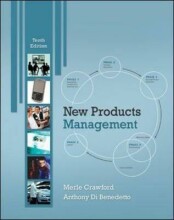Normal accident theory and high reliability organizations
5 important questions on Normal accident theory and high reliability organizations
Basic thesis of Normal accident theory:
Built-in interactive complexity and tight coupling lead to short reaction time and high uncertainty, meaning that effective measures to prevent incidents and accidents after an initial malfunction cannot be implemented in time.
What are the critics of Levenson et al. (2009) of Normal accident theory?
- NAT-T is “obvious and correct” (230), “substantial and important” (232). BUT…
- Perrow does not distinguish between higher and lower-hazard systems, leading him to misclassify low hazard, tightly-coupled, high complexity systems.
- Even apart from this, Perrow and his critics misclassify some industries and overgeneralize.
- Air traffic control is wrongly classified as tightly coupled, for example.
- (Against NAT-C) Some means of increasing safety don’t involve redundancy and don’t increase complexity, e.g., replacing hazardous materials with less hazardous ones, decoupling, designing for controllability, reducing potential for human error (233).
What factors of social and organizational can reduce safety?
- Groupthink/ confirmation bias (tendency to surround oneself with people who agree, low tolerance of uncertainty and ‘cognitive dissonance’) à No rigorous testing of one’s track record, tendency to ignore conflicting information and warning signs.
Contradictory external motivations/ ”Mission creep” à Reduced prioritization of safety
Perverse internal incentives/ Poorly implemented controls à Ineffective organizational control and possibly increased risk
- Higher grades + faster learning
- Never study anything twice
- 100% sure, 100% understanding
Examples of internal control:
■self-reportingtothe Dutch taxauthority (instead of central processing of tax data)
■self-gradingandevaluation at university
■self-reporting of data bybanksto a centralauthority (e.g., debtto asset ratio)
■self-assessment of safety of medicaldevicesby companies
Five hallmarks for HRO's
- Preoccupation with failure
- Reluctance to simplify interpretation
- Sensitivity to operations
- Commitment to resilience
- Deference to experience/ decentralized decision-making
- In particular, on this last point: safety needs to be placed in the hands of workers who know the situation and the technology and who may have to improvise in order to maintain safety, especially in a crisis (Leveson et al., 228).
The question on the page originate from the summary of the following study material:
- A unique study and practice tool
- Never study anything twice again
- Get the grades you hope for
- 100% sure, 100% understanding






























